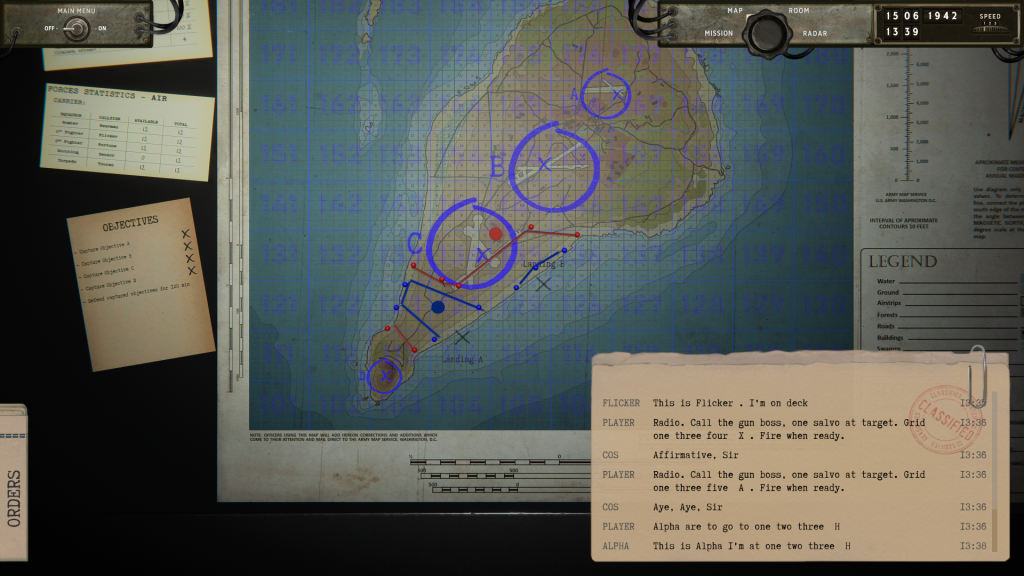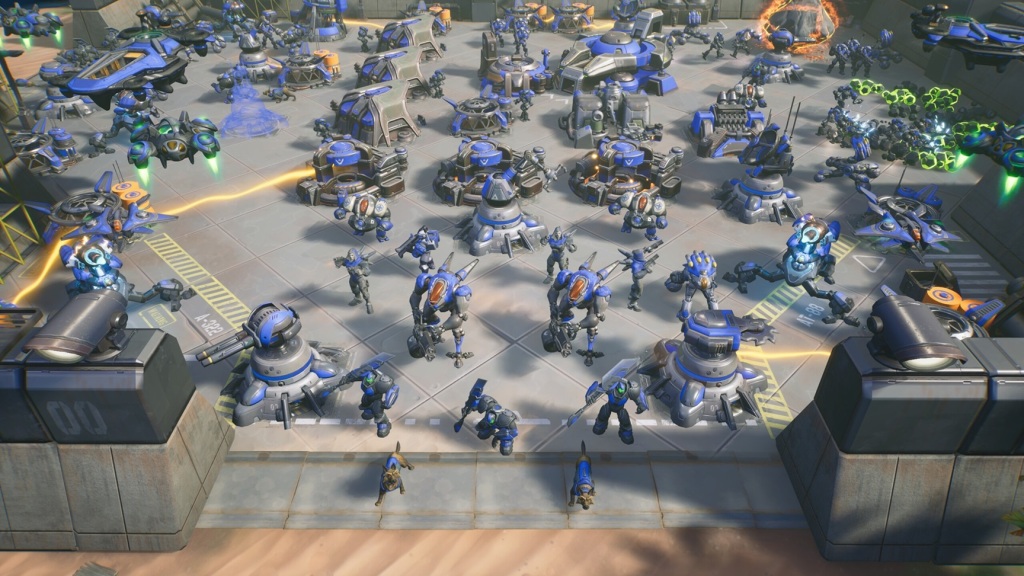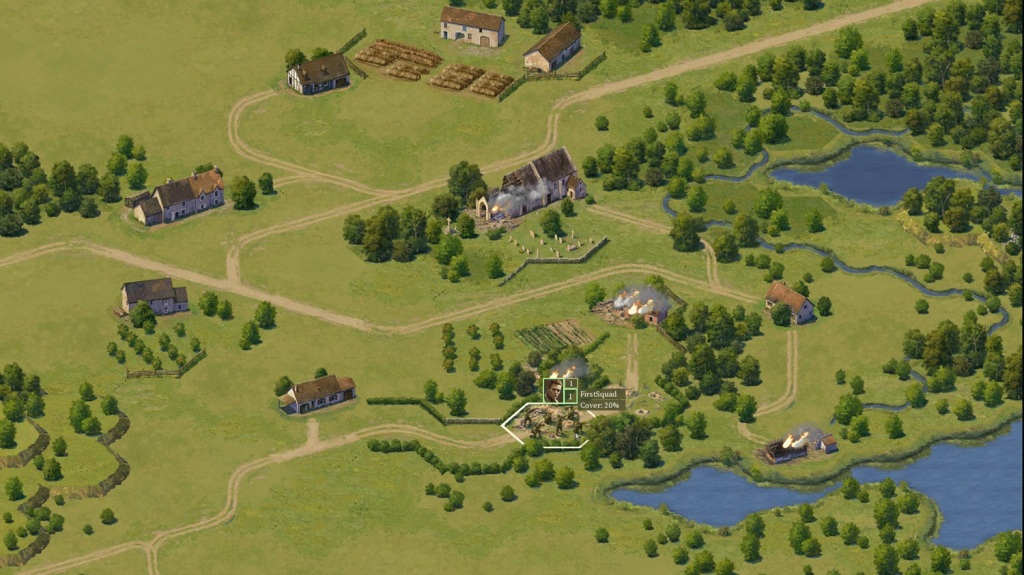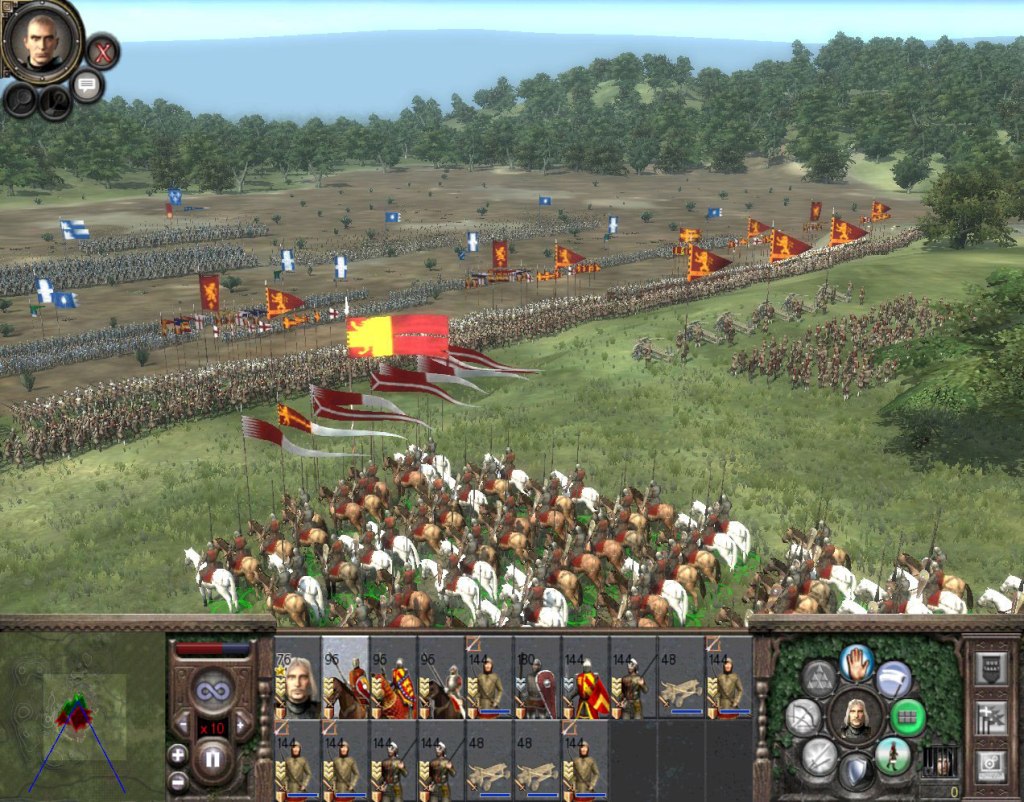Recently I had the opportunity to pester and annoy Grzegorz until he gave me an interview about Squadron Studio’s upcoming videogame, Radio Commander: Pacific Campaign. He not only was nice enough to give this interview but also provided me with screenshots and some information you most certainly haven’t read elsewhere. Enjoy!
Hello, Grzegorz, want to introduce yourself and your team? Who are you guys?
We are a game studio from Poland. So far, we’ve been making custom games. We decided to release the game to an open market. The team is a gallery of very competitive people, each of whom is a personality in itself. What I can say is that it was an honor to command such an interesting company.
As a team, we are a very young team, but each of its members has a lot of experience. We have people who have already worked in the game development industry and then we have those who are just taking their first steps.
As for me, I’m a former officer and veteran. I served in the airborne regiment and was an officer of the regiment staff and squadron commander. This military experience resulted in the fact that when we were looking for a direction to go in with our first major production, we chose a game like Radio Commander. Partly because after playing Radio Commander Vietnam I realized: this is a real battlefield commander simulator.
Where did the idea of creating Radio Commander come from? And for those that are unfamiliar with it, what is Radio Commander in its essence, and what sets it apart from other games?
The idea of the game of radio command was born in the mind of Bartek Gajewski, President of Game Operators. The idea was to put the player in a situation where he gives commands by means of voice communication (radio, telephone) and builds a picture of the situation only on the basis of information received from those on the field.
What makes it fun is that the player has to empathize with the situation and try to predict the development of said situation only on the basis of what he hears. So that he/she is aware of the situation, he/ she receives tools that allow them to add a picture of the situation. There is an operational map in both Radio Commander (Vietnam) and Radio Commander Pacific Campaign. Therefore, the player must skillfully place tokens or draw signs on the map and then rearrange them along with the course of action.
Of course, neither subordinates nor the communication system makes commanding an easier task. Subordinates can make mistakes, and communication can be interrupted or disrupted. Subordinates can also misunderstand orders. To this should be added combat dynamics, in which you can get confused as to where the opponent is in reality.
All this means that the games from the Radio Commander series can be treated as very close to real commander simulators. There is, as is usually the case, no point showing and no auto-movement of units. Do you want them to move? Take the radio and give the order. Then wait for them to report. And if the unit calls you in the meantime, it usually means that the situation is going bad. A game of this type requires you to first plan your action, but when it starts, you need to react quickly. By playing this type of game, you really feel like a commander. You are sitting by the radio and you want to believe that your subordinates are doing what you told them to do. This way the map really becomes the center of the gameplay.
As far as I know, you guys were the first to put maps at the center of gameplay. What challenges did that bring?
We faced the problem of how important the map is for the player. The experience of the team from Radio Commander Vietnam with whom we worked turned out to be crucial. It was a confirmation of what we felt, considering our earlier military experience in life.
Remember that the service of the commander at the levels at which the player will be in the RCPC does not arouse crazy adrenaline. However, the decisions he makes are shaped by the theater of operations and the battlefield. And this is what we wanted to reflect in this game, although even on both levels we do not anticipate boredom for the player. The map is indeed the focal point, but it only serves to visualize the situation.
Knowledge about the battlefield comes from radio messages received from subordinates, i.e. from the battlefield. Therefore, the control over the orders issued and their execution is right behind the map. It is played through the radio, not the map. In the Radio Commander series, the traditional game model is reversed where generally movement on the map causes action. Here, the action must cause movement on the map. Otherwise, the player loses orientation … just like a commander. Therefore, the map remains the central command point, but it is up to the player how useful it will be.
I’m curious to know why did you guys decide to go with Pacific Campaign after Vietnam?
As we like the idea of a Radio Commander, we started looking for a different period in history where radio was the main means of communication on the battlefield. This led us to World War II. And here we were looking for something that would allow us to develop this idea. We noticed the diversity of the clashes in the Pacific campaign and decided to send Radio Commander to the Pacific this time.
We felt that it was going to be a challenge because we wanted to push the bar a little higher for players. And at the same time, we did not want to give up our main idea, i.e. radio leadership. The campaign in the Pacific had its own character and we are trying to reflect this in the game. And if we are talking about it, the question arose during the work, what would happen if the American carriers were in Pearl Harbor during an attack. And the team’s answer was: let’s do a nonlinear game this time. So the player can lose San Francisco in this game.
Surely, a game as different as this must have gone through various iterations and changes, can you walk me through some of those?
First, we were looking for a different period in the history of wars, but one where the radio was in use. And we found him in the Pacific. We were still looking to make the game more attractive to develop Radio Commander Vietnam. And here some ideas came up. There are only a few left of the whole range, i.e. two levels of command, naval battles of aircraft carriers, non-linearity of the game as such.
Without going into too much detail, we had to solve the problems of transitioning between command levels. The fact that the player is at the level of the commander of the entire Pacific theater and also in charge of a specific battle meant that we had to put a lot of effort into coordinating these two levels. Theater-level decisions had to be reflected on a tactical level. The results of the tactical battles must reach the theater level.
It was no different when the aircraft carrier battles appeared. The campaign in the Pacific was characterized by aircraft carrier battles and the actions of the so-called Task Forces. We tried to reflect this without entering into the complicated command of each ship of the team.
Later, we added carrier aviation to land battles. We had to resolve many dilemmas as to the “depth” of air command. It was tempting to give the player access to every plane, but that could dominate the game and work to the detriment of other forces. We think we have found a compromise, but it is the players who will show whether we are right or not.
I don’t want to reveal all the secrets, but we encourage you to add the game to your wishlist. We’ll be revealing a bit more from time to time.
When compared to the Vietnam war, the Pacific Campaign of the Second World War is a totally different beast, how can we expect to see this reflected in the gameplay?
First, we’ll be on two levels of command. You will be able to be the strategic commander of the entire theater of operations in the Pacific. From there, you will command the carrier task forces and send air and underwater patrols, and also conduct aerial bombing. You’ll be in command of the force from a large war room somewhere in Hawaii. You will have to detect your opponent’s movements and try to predict where they will hit in the next move. Then set up a trap and face them in battle. You will also need to send landing teams to the atolls and islands of the Pacific. Capturing them will be crucial for advancing deep into the territory occupied by the opponent. At this level, you will command by radio, specifically by telex, by sending commands to your subordinates. In battle, you will have several types of air force, infantry, marines, tanks, and artillery at your disposal. Each conquest of a region is a separate battle. Additionally, when you manage to intercept enemy aircraft carriers, you will have to fight a sea battle. In battle, you will command via radio and voice prompts. On both levels, we tried to reflect what the commanders felt. Anxiety when an order is passed, joy when an objective report is coming in, or anxiety when there is radio silence…
Due to the level of command, we have added a Chief of Staff to each level. As it happens in the army, COS will help the commander by providing information (implicitly obtained through staff S2 officers) about the state of your own troops. They will help you a bit. But these staffers will not do what is the essence of the commander’s work – he will not give the order and will not take responsibility for it. In this, the commander is always alone. We wanted to achieve two goals when introducing this character to the game. First – introduce the player to the position of the brigade-level commander, where there is always a staff…and the Chief of Staff. We wanted to convey the atmosphere of a war room or a war cabin where concepts and information intersect, and eventually, where the order is ultimately born. Secondly, we wanted to pay a modest tribute to all Chiefs of Staff at all levels of command. This is because when we think about campaigns or battles, we usually associate them with the names of commanders. And the tormented work of staff officers, tied together by the personality of the chief of staff, usually remains beyond the horizon of perception. To illustrate this, a simple test is enough: name the chiefs of staff from three selected battles from the Pacific Campaign.
Surely, a game as different as this must have gone through various iterations and changes, can you walk me through some of those?
First, we were looking for a different period in the history of wars, but one where the radio was in use. And we found him in the Pacific. We were still looking to make the game more attractive to develop Radio Commander Vietnam. And here some ideas came up. There are only a few left of the whole range, i.e. two levels of command, naval battles of aircraft carriers, non-linearity of the game as such.
Without going into too much detail, we had to solve the problems of transitioning between command levels. The fact that the player is at the level of the commander of the entire Pacific theater and also in charge of a specific battle meant that we had to put a lot of effort into coordinating these two levels. Theater-level decisions had to be reflected on a tactical level. The results of the tactical battles must reach the theater level.
It was no different when the aircraft carrier battles appeared. The campaign in the Pacific was characterized by aircraft carrier battles and the actions of the so-called Task Forces. We tried to reflect this without entering into the complicated command of each ship of the team.
Later, we added carrier aviation to land battles. We had to resolve many dilemmas as to the “depth” of air command. It was tempting to give the player access to every plane, but that could dominate the game and work to the detriment of other forces. We think we have found a compromise, but it is the players who will show whether we are right or not. I don’t want to reveal all the secrets, but we encourage you to add the game to your wishlist. We’ll be revealing a bit more from time to time.
I’m curious to know if there’s going to be tactical control during the ship-on-ship combat. Or only during the landing of troops?
The main rule is to only direct combat over the radio. At the tactical level, we did not quit this idea, even during the ship-to-ship combat. The player will have to manage the fleet, air squadrons, and the fleet. They’ll also have to manage them when under attack by enemy aviation. Besides, in the game, we will not only fight at sea or land on atolls. During the development phase, we realized that the variety of battles could complicate all radio communications. Especially since the RCPC has a fixed-wing aviation whose dynamics in combat are much higher than that of infantry or tanks. Therefore, the player receives decision support tools. One of them is the mission board. This gives knowledge about the current state of air squadrons, their tasks, time of completion, and the current phase of the mission. The second tool is a radar plotter, thanks to which you can follow the situation in the air around the fleet. However, the main field of the game is the map, regardless if we’re talking about the tactical or the strategic level. The map is the focal point of the game. Running the game on an ongoing basis is crucial to know the situation. But these are just support tools. They provide information, but the player has to make the decisions and orders for himself. Just like a real commander.
And how will the command of troops differ from the previous title?
This is a simple consequence of the command levels. In Radio Commander: Vietnam, you had a radio at your disposal, and through it, you gave commands directly through the microphone. Here you will have a room full of telexes or radiotelephones that will transmit your decisions by radio to subordinates. So the radio does not disappear from the game. It falls into the hands of trained radiotelephones, and the player must focus on commanding and building a picture of the situation based on reports. However, the key issue will still be to keep the map up-to-date. This is a key point when you are in command. There are no magic indicators that automatically move the frontline. The player, like the commander, must infer from what he receives in the field report. If something is unknown? You have to do a diagnosis. And the situation is constantly changing.
In the previous Radio Commander, you were in command of a company or reinforced battalion level. In RC: Pacific, you’ll be a brigade-level commander. You will have two or more regiments to command, artillery, tanks, and aviation. This makes the game very different. The exact location of the platoon or company will be less important to you and what’s more important is if the regiment commander reaches the target or objective. We tried to make the player feel like a general who indicates tactical objectives but does not crumble to command each platoon, company, or battalion. We tried to make the player feel that he is in charge of a whole battle and there are regiment commanders on site, to whom he assigns a task, but who also play a part. Therefore, it will be more important to mark the front lines than the locations of individual sub-units. However, you will have to provide these commanders the tasks based on information about the enemy’s locations.
We also tried to move away from linear gameplay. Japanese can capture Midway or San Francisco. They can push the Americans out of Guadalcanal, etc. I don’t want to reveal too much about the game, but we tried to make the player feel a twinge of anxiety at both levels of command, which was experienced by the commanders from that time. The game has no single ending. There is no single way to win the game. The Americans don’t necessarily have to land on Iwo Jima. And after landing, it may turn out that the landing party is pushed into the sea. We wanted more of a picture of the command of the day than of a historical campaign. I hope that people who are not necessarily interested in history will find themselves wanting to know more because of this game thanks to our efforts.
Anything else you want to add?
I would like to add that throughout the development of this game we had before our eyes the words of General Bradley: “A piece of paper makes you an officer; the radio makes you a commander.” And that’s the truth. Whoever had the opportunity to sit behind the radio and command, or at least give orders, knows how depressing the silence is when the report should have arrived a long time ago. Or how the adrenaline rush goes up when you need to send air support or a medical evacuation.
Therefore, we tried to reflect what the commander feels in the station, at a time when there were no modern blue force trackers and other technical achievements. He only has a radio and a map … and something to write information down. We also tried to make the voices heard by the player on the radio the voices of people who had a chance to go through the combat conditions in the conflicts of recent years. That is why we invited veterans to join us. They helped us a lot. We hope that this will be appreciated by the players. Some of the veterans have really interesting CVs. We will try to show them successively, so I invite you to like Radio Commander: Pacific Campaign.
Thank you also for inviting me to be interviewed. I very much appreciate your work on this website. And of course, I wish you good luck in the future.
Follow Strategy and Wargaming Socials
Strategy and Wargaming needs you to follow its socials. Are we the best strategy gaming website around? I would say so. Heck, what other options do you have? The Wargamer? Please.
So why not give us a follow on the cesspool that is Twitter, or join the 1000 other geriatric patients on Facebook? Or subscribe down below? Or maybe do everything? I don’t care, I’m not your grandmother.
If you enjoyed the article, consider buying me a coffee!
I’ve been running Strategy and Wargaming at my own expense since 2017, with only the ad revenue to cover the hosting, with everything else being done by me. So, if you’re an avid reader, you can afford it, and want to support the website, please consider Buying Me a Coffee by clicking this link, for as low as one euro! If you do, just know that you’re helping out a lot and contributing so that Strategy and Wargaming can continue growing!












Leave a comment